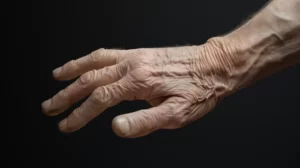Christopher Reeve, the actor who portrayed Superman, tragically passed away in 2004 due to complications arising from infected bedsores that led to blood poisoning and heart failure. Bedsores, more accurately known as pressure sores, pose a grave risk to individuals with limited mobility. One of the most dangerous complications they can face is the potential for bedsores to lead to further health problems and, in some cases, even become fatal. This issue highlights the importance of understanding and effectively managing bedsores thus helping improve the quality of life for both patients and caregivers.
What are pressure sores?
Pressure sores are injuries to the skin and underlying tissue arising from prolonged pressure on the skin. They most commonly occur in bony areas where there’s little to no padding between the skin and the bone, such as the heels, ankles, hips, tailbone, and elbows. The limited blood supply to these areas due to prolonged pressure leads to tissue damage and, eventually, the formation of pressure sores.
Individuals with limited mobility, such as those who are bedridden or wheelchair-bound, are particularly susceptible to developing pressure sores. In fact, a report from Harvard Medical School suggests that several thousand Americans die every year due to complications linked to these sores.
Prevention: The key to maintaining healthy skin
Preventing pressure sores is crucial in maintaining a patient’s overall health and well-being. An ounce of prevention, in this case, is worth substantially more than a pound of cure. Here are some helpful strategies to prevent pressure sores from forming:
1. Regularly change the patient’s position
For bedridden individuals, changing their position every two hours can help relieve pressure on vulnerable areas. For those who spend most of their day in a wheelchair, they should shift their weight every 15-30 minutes. Encourage the patient to do this independently if possible and, if not, ensure that you provide the necessary assistance.
2. Inspect the skin daily for signs of pressure sores
Regularly check the patient’s skin for any signs of redness, swelling, or discomfort, which may indicate the early stages of pressure sore development. Timely intervention can prevent the sore from progressing to a more severe stage. Immediate attention to any signs of a sore is essential in effectively preventing complications.
3. Maintain proper skin hygiene
Keeping the skin clean and dry is fundamental to the prevention of pressure sores. Use a mild soap and lukewarm water to clean the body, patting the skin dry rather than rubbing it. If necessary, use talcum or moisture-absorbent powder to help keep vulnerable areas dry.
4. Provide adequate nutrition and hydration
Proper nutrition and hydration are crucial for maintaining healthy skin and promoting healing. Ensure that the patient consumes a balanced diet rich in vitamins, minerals, and protein. Encourage them to drink water and other fluids regularly.
5. Use additional padding
Adding extra padding or cushions to the patient’s bed or wheelchair can help reduce pressure on bony areas. Examples of suitable padding materials include foam, gel, sheepskin, and air-filled cushions.
Treating pressure sores
Despite preventive measures, pressure sores may still form. In such cases, prompt treatment is crucial to prevent complications and alleviate pain. Here are some strategies for managing these sores:
1. Offload pressure on the affected area
Relieve pressure on the sore by continually repositioning the patient and using pillows or cushions to cradle the affected limb or body part. For instance, place a pillow under the patient’s ankle to keep the heel elevated and off the bed.
2. Keep the wound clean and dressed
Wound care is essential for preventing infection and promoting healing. Clean the pressure sore according to medical advice, and apply an appropriate dressing to protect the wound and maintain a moist healing environment.
3. Encourage debridement
The removal of dead or damaged tissue, known as debridement, is often necessary to promote healing. This process should be carried out as per medical advice, using methods such as surgical debridement, enzymatic debridement, or mechanical debridement.
4. Seek medical attention if required
If the pressure sore worsens or shows signs of infection, do not hesitate to consult a healthcare professional. Timely diagnosis and treatment can help prevent complications and further deterioration of the patient’s condition.
In conclusion, the effective management and prevention of pressure sores are essential for maintaining the health and quality of life for individuals with limited mobility. By adopting preventive measures, caregivers can help minimize the risks associated with these sores and provide optimum care to their loved ones.



